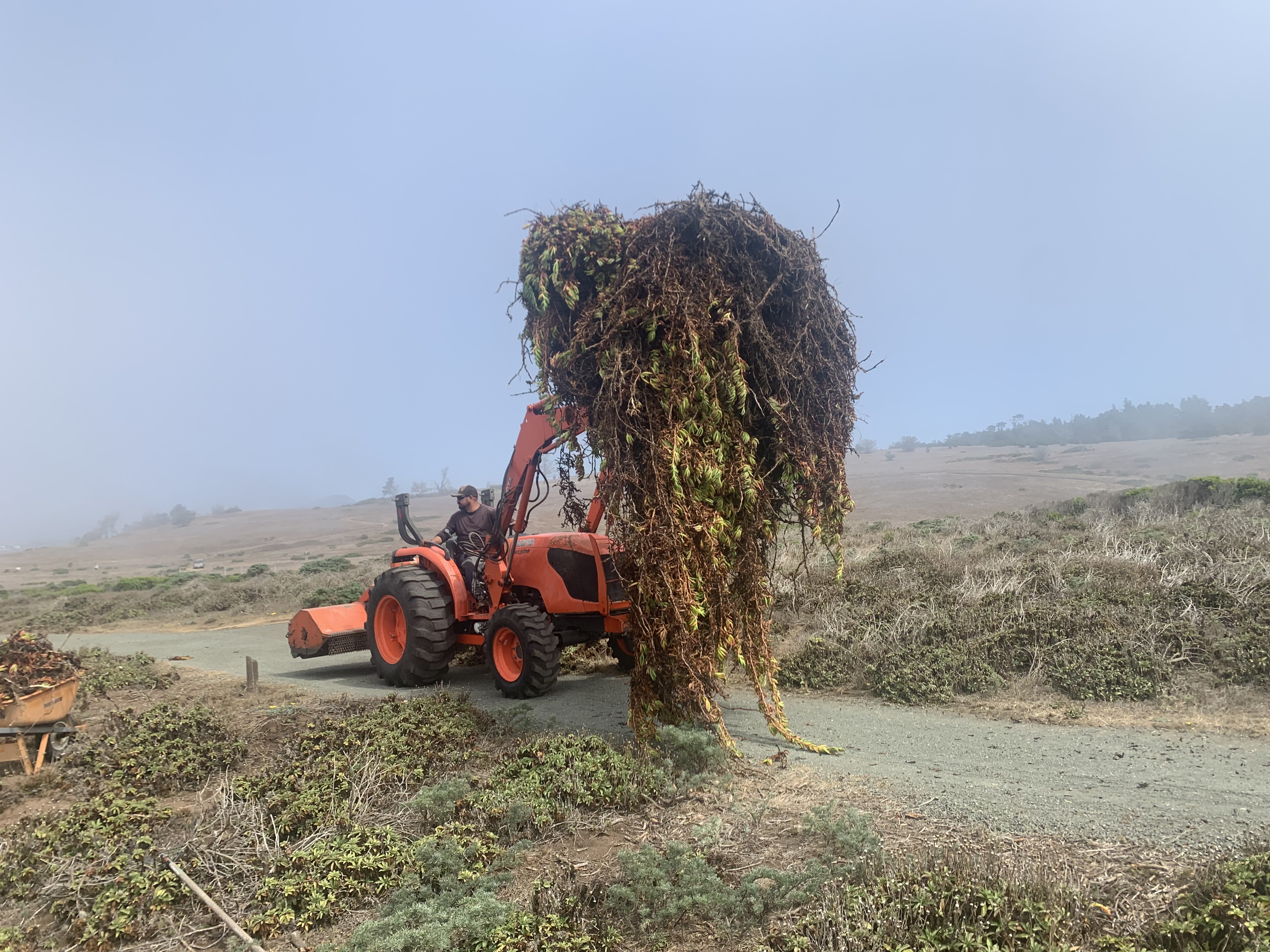2022.09.15 | Bluff Trail Detour
This week and next week, much of the southern portion of the Bluff Trail is closed for habitat restoration. Travel between the southern extension of the Meander Trail and the Arch Bench is redirected to the Marine Terrace Trail. Closed sections are clearly marked by signs. The route will be fully reopened on the weekends.
Cambria Community Services District (CCSD) has hired a local crew to remove South African ice plant (Carpobrotus edulis, Carpobrotus chilensis, and their hybrids) from the coastal bluffs. They are working with hand tools and small tractors to remove the invasive plants while leaving natives to repopulate the area. Pedestrians are at risk around this equipment so please obey the closed trail signs for your own safety.
A temporary access road was mowed to allow equipment in and out. Once the work is completed, it will be sown with seed of grass species native to the Ranch.

Area where ice plant is being removed. Area circled in red removed week 1.
Habitat restoration is a long-standing goal of Fiscalini Ranch Preserve management and a constant effort by Friends of the Fiscalini Ranch Preserve (FFRP). Initial studies of the Ranch cited ice plant removal as a key step in restoration because it crowds out the native coastal bluff vegetation. If left untouched, a monoculture of ice plant would eventually cover untold acres of the Ranch as it has in many areas along California’s coast.
Contrary to widespread belief, ice plant is not good at stabilizing bluffs. Its shallow roots are not effective for fixing soil in place. Native plants have finer, deeper roots that are much better at holding the bluff’s loose soil together. While ice plant is full of water all year round, the mass of native plants is far less. By relieving the bluff tops of this heavy burden and restoring soil-holding roots, we hope to protect these fragile places.
A recent study by a master’s student at California State University, Bakersfield, found that ice plant reduces native plant diversity, and that the diversity remains low for about 18 months after it is removed. To help restore diversity where ice plant is removed, we leave natives that grow quickly to cover the area, spread seed, and replant with locally sourced species. Volunteer crews will continue to work by hand where natives and invasive plants are mixed, but the progress made by the work crew moves Fiscalini Ranch Preserve much closer to its natural habitat.
If you want to help restore habitat on the Ranch, join FFRP and CCSD this Saturday, the 17th, at 10 AM, to give some Monterey pine saplings a drink. (The recent rain, though welcome, was not enough to see them through.) The watering work party will meet south of the Dolphin Bench (look for the truck). We will provide water and jugs. Sturdy shoes, long pants, tick spray, and gloves are recommended. No registration is required, and families are welcome.
Originally published in https://cambriaca.org/



